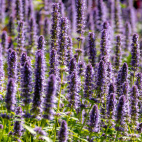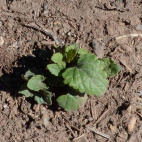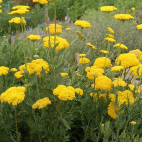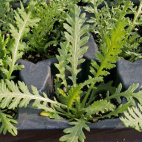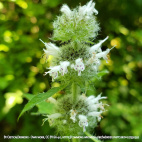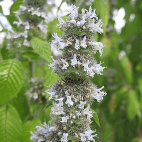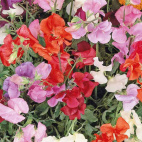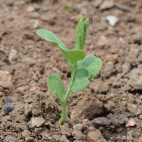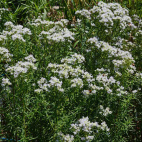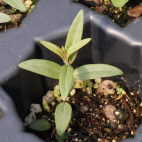Color
Availability
USDA Zone
Region
Type
Duration
Season
Germination
Soil
Sunlight
Height
Use
Narrow Your Search
Color
Availability
USDA Zone
Region
Type
Duration
Season
Germination
Soil
Sunlight
Height
Use
Wildflower Seeds - Northern Region
The Northern region is home to our Canadian friends in the eastern provinces, as well as the northern-most part of the Eastern US. This area is characterized by a long, cold winter with lots of snow, and a short humid summer that only lasts about 3 or 4 months. Most of the area is classified as a UDSA Growing Zone 4 or less, and the species that grow here have interesting ways to perpetuate themselves in spite of the short growing season. There are a lot of forests and wetlands in this region, so adequate moisture is hardly ever a problem. Look up your growing zone to make sure that the Northern wildflower seeds that you want to grow are winter hardy. Alternatively, just order annual flower seeds online so that the plant does not need to make it through the winter, but can reseed itself and come back from seed the next year.
-
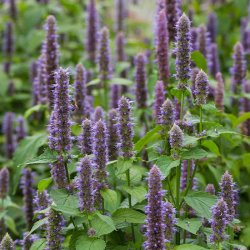 Anise Hyssop Seeds
Agastache foeniculum
A member of the mint family, this wildflower brings a delightfully rich scent to any herb garden. The tall, lavender flower spikes attract multitudes of hummingbirds, bees, and butterflies. It is a favorite with beekeepers, and we have found that the anise honey from this plant is excellent!Quick Viewx
Anise Hyssop Seeds
Agastache foeniculum
A member of the mint family, this wildflower brings a delightfully rich scent to any herb garden. The tall, lavender flower spikes attract multitudes of hummingbirds, bees, and butterflies. It is a favorite with beekeepers, and we have found that the anise honey from this plant is excellent!Quick ViewxAnise Hyssop Seeds
Agastache foeniculum
A member of the mint family, this wildflower brings a delightfully rich scent to any herb garden. The tall, lavender flower spikes attract multitudes of hummingbirds, bees, and butterflies. It is a favorite with beekeepers, and we have found that the anise honey from this plant is excellent!
$3.48 Pkt - $16.57 / Oz -
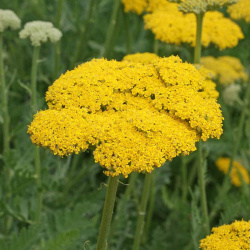 Gold Yarrow Seeds
Achillea filipendulina
Fragrant, fern-like foliage, and cheerful, long-lasting flowers make this an enduring favorite. It is quite a bit taller and brighter than the Common White Yarrow. Beautiful en masse, or as a border plant.Quick View$3.48 Pkt - $16.57 / Oz
Gold Yarrow Seeds
Achillea filipendulina
Fragrant, fern-like foliage, and cheerful, long-lasting flowers make this an enduring favorite. It is quite a bit taller and brighter than the Common White Yarrow. Beautiful en masse, or as a border plant.Quick View$3.48 Pkt - $16.57 / Oz -
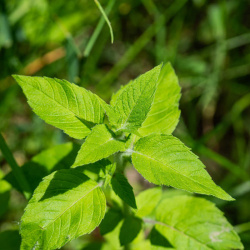 Hairy Wood Mint Seeds
Blephilia hirsuta
This charming variety of wood mint is also known as Hairy Pagoda Plant for its unusual stacked clusters of flowers. The fragrant plant grows in fertile woodland soil and is a magnet for pollinators such as honeybees.Quick View$3.75 Pkt - $100.00 / Oz
Hairy Wood Mint Seeds
Blephilia hirsuta
This charming variety of wood mint is also known as Hairy Pagoda Plant for its unusual stacked clusters of flowers. The fragrant plant grows in fertile woodland soil and is a magnet for pollinators such as honeybees.Quick View$3.75 Pkt - $100.00 / Oz -
 Knee High Sweet Pea Seed Mix
Lathyrus odoratus
Ideal for hanging baskets or window boxes, this bushy, semi-dwarf variety is just the right height. The sweet-scented blossoms show off in red, fuchsia, purple, and white. This annual is super easy to grow and will bloom in its first growing season.Quick View$3.48 Pkt - $9.54 / Oz
Knee High Sweet Pea Seed Mix
Lathyrus odoratus
Ideal for hanging baskets or window boxes, this bushy, semi-dwarf variety is just the right height. The sweet-scented blossoms show off in red, fuchsia, purple, and white. This annual is super easy to grow and will bloom in its first growing season.Quick View$3.48 Pkt - $9.54 / Oz -
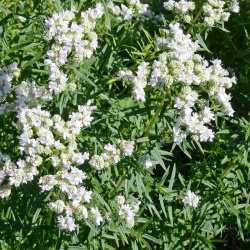 On Sale!
Mountain Mint Seeds
Pycnanthemum virginianum
This native member of the mint family grows in the valleys as well as in the mountains. It is such a desirable species for pollinators that it is a key component of many native seed mixes. It thrives in wet soil but grows well on an average mesic soil as well.Quick Viewx
On Sale!
Mountain Mint Seeds
Pycnanthemum virginianum
This native member of the mint family grows in the valleys as well as in the mountains. It is such a desirable species for pollinators that it is a key component of many native seed mixes. It thrives in wet soil but grows well on an average mesic soil as well.Quick ViewxMountain Mint Seeds
Pycnanthemum virginianum
This native member of the mint family grows in the valleys as well as in the mountains. It is such a desirable species for pollinators that it is a key component of many native seed mixes. It thrives in wet soil but grows well on an average mesic soil as well.
$3.75 Pkt - $36.00 / Oz
The Northern region is home to our Canadian friends in the eastern provinces, as well as the northern-most part of the Eastern US. This area is characterized by a long, cold winter with lots of snow, and a short humid summer that only lasts about 3 or 4 months. Most of the area is classified as a UDSA Growing Zone 4 or less, and the species that grow here have interesting ways to perpetuate themselves in spite of the short growing season. There are a lot of forests and wetlands in this region, so adequate moisture is hardly ever a problem. Look up your growing zone to make sure that the Northern wildflower seeds that you want to grow are winter hardy. Alternatively, just order annual flower seeds online so that the plant does not need to make it through the winter, but can reseed itself and come back from seed the next year.







